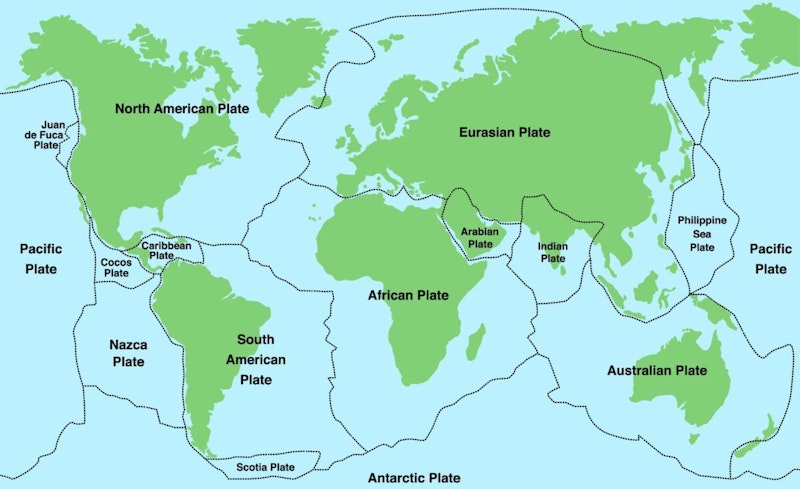Study Notes
GCSE Geography | Where do Earthquakes and Volcanoes Occur? (Tectonic Hazards 4)
- Level:
- GCSE
- Board:
- AQA, Edexcel, OCR, Eduqas
Last updated 18 Oct 2024
Earthquakes and volcanoes do not occur randomly across the globe - the majority of them occur at plate margins. There are 3 plate margins that you need to know as part of the GCSE course: destructive margins, where the plates are moving towards each other; constructive margins, where the plates are moving away from each other; and conservative margins, where the plates are moving side by side.

Earthquakes can be found at all three plate margins. Volcanoes only form at destructive and constructive margins - they don't form at conservative margins as there is no rising magma.
You can find earthquakes and volcanoes on the land and in the sea. For example, there is a chain of earthquakes and volcanoes that runs down the west coast of North and South America, along the margin of the North American Plate and the Pacific Plate, and the South American Plate and the Nazca Plate. There is also a long line of earthquakes and volcanoes along the margin between the Pacific Plate and the Eurasian and Philippines Plates. Both of these form part of the Ring of Fire which circles the Pacific Ocean.
However there are some areas across the globe that are not on plate margins yet experience tectonic activity - these are known as hot spots where the Earth's crust is so thin that it allows magma to rise and escape. The most famous example of hot spot activity is Hawaii, which formed due to volcanic eruptions, and now is one of the most volcanically active places in the world, and home to Kīlauea, which is said to be the most active volcano in the world.
You might also like

3 great simulation games for geography lessons
2nd February 2016
Introduction to Plate Tectonic Theory
Study Notes
Indonesian earthquakes
6th August 2018
Tectonic Hazards | AQA GCSE Geography
Quizzes & Activities
Daily Email Updates
Subscribe to our daily digest and get the day’s content delivered fresh to your inbox every morning at 7am.
Signup for emails